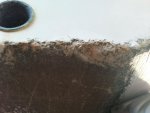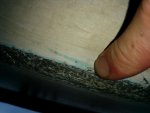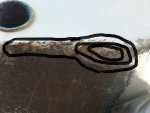Hi all,
So looking to do some fiberglass repair on the boat over the off-season. Just had a few hopefully quick answer questions that will hopefully help many people:
Structural or cosmetic - other than common sense to the size of damage and wood staining visible are there any other damaged parts that should be left to the professionals - in my case the very bottom of the transom below the plug is somewhat damaged (surface broken) where its scrapped the sand bed.
Outside Corner repair tips - This mentioned section below the plug is on a corner under the boat/transom. Youtube repairs show some corners but not when repaired from the outside only. Any tips?
Is Gel-coat required and matching old faded coat? - Being under the boat at the back and hard to match a faded old colour ? is gel coat even required at all for sealing or can I leave the repair without gelcoat?
Filler uses - If I have understood correctly fillers can be used for very light cosmetic scratches and possibly on top of other repairs for an easy to sand down surface?
Water absorption on trailer boat - Given the climate here in Auckland NZ, and the boats only in the water a few hours a week, is water absorption (wood rot) likely or is this only an issue for boats moored in water?
Thanks in advance!
So looking to do some fiberglass repair on the boat over the off-season. Just had a few hopefully quick answer questions that will hopefully help many people:
Structural or cosmetic - other than common sense to the size of damage and wood staining visible are there any other damaged parts that should be left to the professionals - in my case the very bottom of the transom below the plug is somewhat damaged (surface broken) where its scrapped the sand bed.
Outside Corner repair tips - This mentioned section below the plug is on a corner under the boat/transom. Youtube repairs show some corners but not when repaired from the outside only. Any tips?
Is Gel-coat required and matching old faded coat? - Being under the boat at the back and hard to match a faded old colour ? is gel coat even required at all for sealing or can I leave the repair without gelcoat?
Filler uses - If I have understood correctly fillers can be used for very light cosmetic scratches and possibly on top of other repairs for an easy to sand down surface?
Water absorption on trailer boat - Given the climate here in Auckland NZ, and the boats only in the water a few hours a week, is water absorption (wood rot) likely or is this only an issue for boats moored in water?
Thanks in advance!























